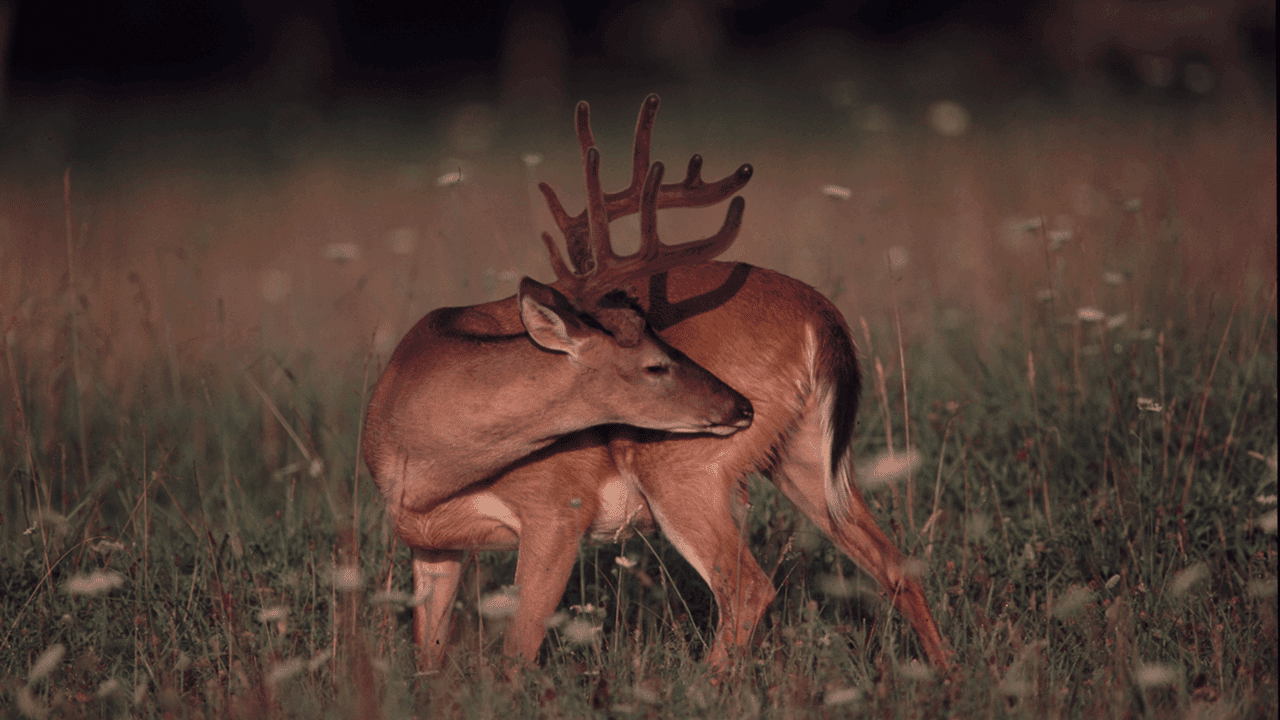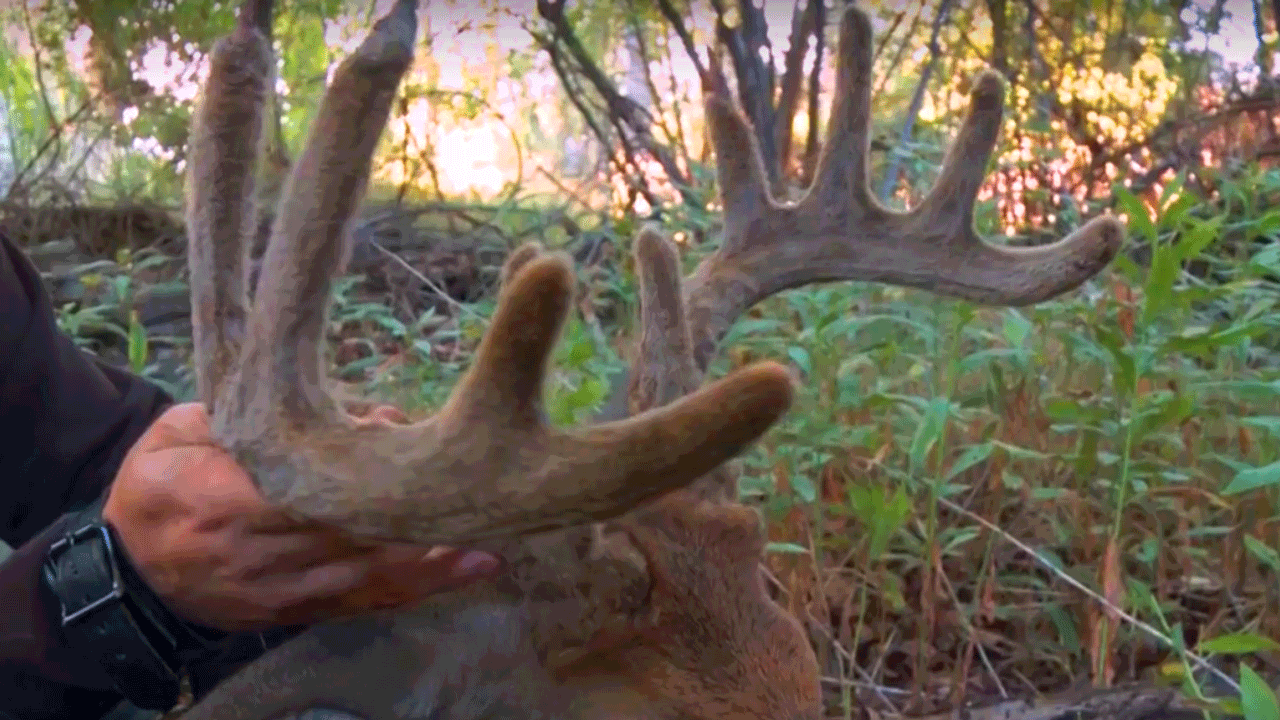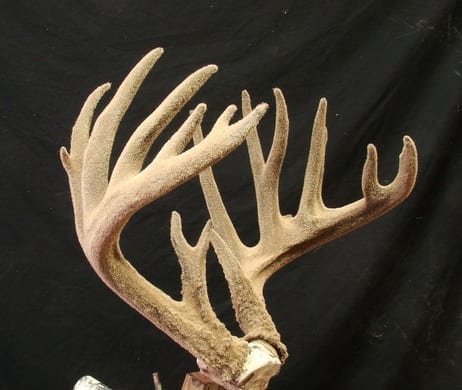We’re in the final days before the opportunity to punch an archery velvet buck tag kicks off. The Tennessee Velvet Buck Hunt is this weekend, and Kentucky’s archery opener follows in the first week of September. We’ve also got a few friends hunting out west that’ll be doing their best to punch a tag on a velvet buck this year. The bucks have filled out and are tightening up in their final weeks before stripping off their velvet. One question that’s continued to come up from a number of hunters planning to hunt velvet bucks for the first time revolves around the topic of how to prepare a velvet buck for the taxidermist. It’s one of those issues that a lot of hunters fail to consider before the deal is done. However, it’s an issue that you really better be prepared to handle correctly for best results when it comes to preparing your velvet buck for the trophy room.

Will you know how to handle your velvet buck when you punch your tag this year?
How to Prepare a Velvet Buck for the Taxidermist
When it comes to the best way to preserve your velvet trophy, the answer varies depending on who you ask. Some swear by artificial velvet, while others prefer the freeze dried method. They all seem to work, and at times, I’m sure they’ve all failed. Here’s a closer look at the different options out there for how to prepare a velvet buck for the taxidermist.
When I think of velvet bucks, I often think of my friend, Harry Pozniak, outfitter at River Valley Farms in Kentucky. With the early September archery opener in Kentucky, Pozniak sees a lot of velvet buck tags punched from year to year. He’s learned what works and what doesn’t when it comes to how to prepare a velvet buck for the taxidermist. I checked in with Harry to see what his first steps are when a velvet buck is killed.
“As you might expect, you need to be very careful when handling a velvet buck,” says Pozniak. “Do not handle it a bunch. Keep your hands off the velvet as much as possible. A lot of it depends on how developed the antlers are. If there is still a lot of blood and soft tissue in the tips, chances are they are gonna slip, no matter what. You want to get that head in the freezer as quick as possible in preparation for the taxidermist.”
Pozniak’s goal is to get velvet bucks into the freezer as quick as possible before sending them up to Boondocks Taxidermy in Boaz, KY. “The guys at Boondocks do a lot of velvet bucks every year,” says Pozniak. “They know how to make them look lifelike.”

Velvet buck down! Now what? Do you know how to prepare a velvet buck for the taxidermist?
After hearing Pozniak brag on the work done by Boondocks Taxidermy, I decided to give them a shout and get their input on how to best handle a velvet buck after the kill. Boondocks Taxidermy owner, Brett Defreitas, is a 2-time world champion taxidermist that knows his stuff when it comes to deer and turkey mounts. Here’s what he had to say…
“It’s really important to get your velvet buck out of the field as quick as possible,” says Defreitas. “Those antlers are a living organism. Don’t let them sit in the field in the heat, or let the bugs get on them. They’ll deteriorate quick and begin to break down. You also want to be careful how you handle the antlers. You can feel the velvet slip on the bone just by lightly touching the antlers. It can be really easy to split or tear if you’re not careful. Don’t drag your buck by the antlers like you would with a hard-horned buck. And don’t let the antlers bounce around on the ground as you drag your deer by the opposite end either. Any rough handling can be just enough to strip that velvet off. It’s more work, but you really need to handle it with care all the way out of the field.”
Be careful how you strap your buck to the ATV or truck. Don’t allow bungee cords or ratchet straps to make direct contact with the velvet. Use a shirt, towel, or other barrier to cover and protect the velvet as you travel.
“Once you’ve got your velvet buck out of the field, the next step is to get it into the freezer as quick as possible,” says Defreitas. “You want to keep that head frozen until you get it to your taxidermist to prevent any deterioration.”
Boondocks Taxidermy uses the freeze dried method for preserving the velvet. Following removal of blood from the antlers, the freeze drying process takes 2 to 2 1/2 weeks to complete.
In-the-Field-Injection
Another option for getting the preservation process started on your own, and in the field, is to have your own preservation kit with you on the hunt. The video below shows how Guy Eastman goes through the process with a mule deer buck in velvet. Check it out for a look at how this process works.
Going Artificial

Artificial Velvet – replicaracks.com
Artificial velvet can be a great alternative for someone that dosen’t want to mess with the hassle of trying to preserve their buck’s actual velvet. Artificial velvet eliminates the need for excessive field care after the kill. You don’t have to worry about freezing the head. The taxidermist will ultimately strip off all the real velvet, clean it up from all blood and tissue and begin the process of applying the artificial velvet.
It’s a job that taxidermist will usually add $150-250 on to their regular shoulder mount fees.
Does artificial velvet look like the real thing? Well, that depends on who you ask. But the artificial velvet process presents a cleaner, almost flawless appearance when finished. I’ve seen some taxidermist nail it. Others, not so much. Be careful on this one. Make sure this is what you want for your animal.
Artificial velvet eliminates the worry of whether your trophy will last. There’s no meat, blood, or tissue to worry about stinking, becoming brittle, or breaking off. It’s a complete process that can last forever.
How to Prepare a Velvet Buck for the Taxidermist – Conclusion
When the moment arrives, and you finally lay hands on a velvet buck, be sure you take the time to handle it with care. Get your photos knocked out and begin the process of getting your buck safely out of the woods and into the freezer. And no matter what direction you take with your velvet buck mount, be sure you get plenty of customer referrals from potential taxidermists. Talk to people that were satisfied, as well as those that hated what they got. Ask questions. Look at photos. You just killed what could be your trophy of a lifetime. Take the time to make sure you get the job done right when it comes to preserving your velvet buck this season.

 By
By 



